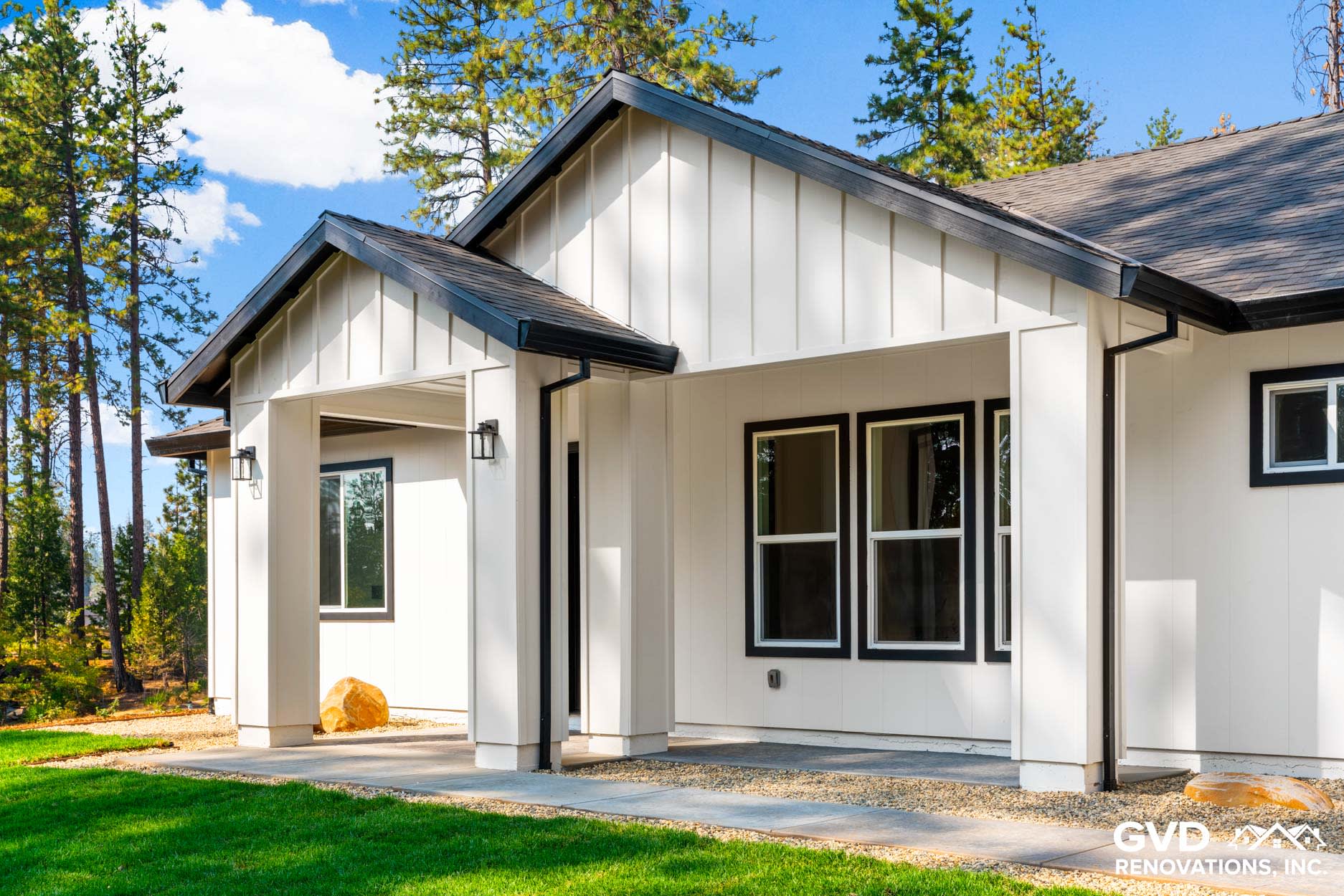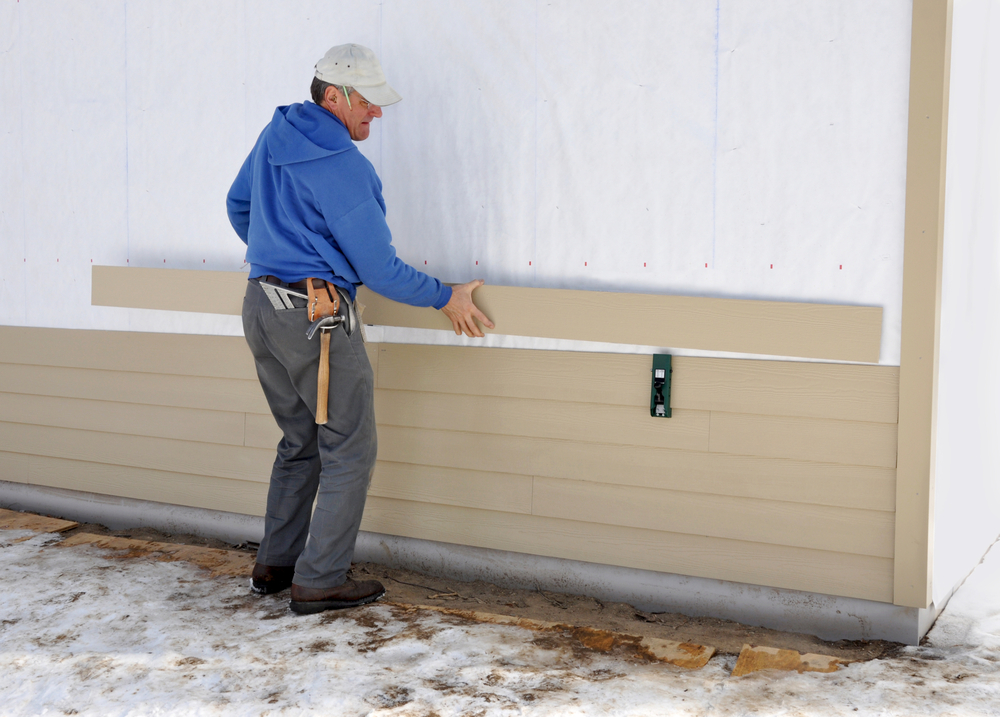The Vital Overview to the Different Sorts Of House Siding and Their Special Benefits
In the realm of home improvement, picking the best house siding is a critical choice that influences both aesthetic appeal and practical performance. With so numerous options to think about, which home siding material really stands out for your details project?
Wood Siding
Wood siding, a prominent selection for property outsides, uses a classic visual that integrates all-natural charm with structural stability. This house siding material is available in various designs, consisting of clapboard, tiles, and board-and-batten, permitting home owners to customize their façade to match their style preferences. Wood siding is normally crafted from resilient varieties such as cedar, redwood, or ache, which are known for their resilience and ability to hold up against ecological stressors.
Among the main advantages of timber house siding is its excellent insulation homes, which can add to power effectiveness and reduced home heating expenses. Furthermore, timber home siding is eco-friendly, making it an ecologically pleasant option when sourced sustainably. Regular upkeep, consisting of painting or discoloration, can lengthen its life-span and enhance its look, allowing home owners to protect the all-natural appeal of the timber.
Nevertheless, possible downsides include susceptibility to parasites, rot, and climate damage, demanding sufficient treatment and upkeep - morris siding contractor. Regardless of these worries, when properly looked after, timber siding can supply a lovely and durable option that improves the character of a home while using a warm, inviting environment

Plastic Siding
Plastic house siding has emerged as a leading selection for house owners looking for a low-maintenance outside option that integrates resilience and cost. This flexible product is crafted from polyvinyl chloride (PVC), making it resistant to numerous weather, including dampness and UV rays. Because of this, vinyl siding does not warp, rot, or discolor, making sure durable visual appeal.
One of the primary advantages of vinyl home siding is its extensive series of styles and shades, allowing homeowners to achieve the preferred seek their residential property without the requirement for frequent repainting. Additionally, plastic siding is simple to mount, which can substantially decrease labor expenses throughout building and construction or remodelling projects.
Vinyl siding additionally contributes to energy performance. Several alternatives attribute insulation support, which improves thermal performance, helping to preserve comfy indoor temperatures and possibly lowering energy costs. Its smooth surface assists in easy cleansing, calling for only periodic washing with a garden tube to remove dirt and debris.
Fiber Concrete House Siding
Fiber concrete exterior siding has actually gotten grip amongst building contractors and home owners alike as a result of its remarkable combination of toughness and aesthetic adaptability. Made up of a mix of sand, cellulose, and cement fibers, this exterior siding choice is crafted to withstand extreme weather, including high winds, heavy rain, and temperature level variations, making it a resilient choice for property outsides.

One of the primary benefits of fiber concrete house siding is its resistance to pests, such as termites, and its non-combustible nature, offering improved fire safety visit this website and security. morris siding contractor. Additionally, it is available in a vast variety of textures, shades, and styles, enabling property owners to achieve their desired visual without compromising efficiency
An additional benefit is its reduced maintenance needs; fiber cement exterior siding typically calls for painting or staining every 5-10 years, which is less regular than other materials. In addition, its durability contributes to a lower overall cost of possession, as it lowers the demand for constant repair work or replacements.
Ultimately, fiber their explanation cement house siding represents an exceptional financial investment for those looking for a durable, appealing, and versatile outside choice, integrating both form and function to improve the home's aesthetic allure.
Metal Exterior Siding
The allure of metal siding exists in its durable longevity and modern-day visual charm, making it a favored option for modern architecture. Readily available in products such as light weight aluminum and steel, steel house siding supplies a series of finishes and colors, enabling house owners to accomplish a personalized look that enhances their design vision.

Energy effectiveness is another significant benefit, as many steel house siding products are made with insulation choices that help regulate interior temperatures. This can result in lowered power expenses gradually. Additionally, steel home siding is frequently recyclable, making it an eco-friendly option for sustainability-minded homeowners.
The installment process for steel siding can be relatively simple, resulting in a quicker turnaround time for construction projects. In general, steel siding incorporates performance and style, making it a practical choice for those seeking a long-lasting sites and visually appealing outside coating.
Block and Stone House Siding
Block and rock exterior siding stands apart as a timeless selection that improves the visual beauty of any home. Known for their toughness and reduced maintenance, these materials provide a phenomenal return on investment while elevating the building's aesthetic charm. Readily available in numerous colors, appearances, and patterns, brick and stone can be customized to match diverse architectural styles, from standard to contemporary.
One of the key advantages of brick and rock siding is their energy effectiveness. Both materials have all-natural shielding homes that help control indoor temperatures, potentially reducing heating & cooling prices. In addition, they provide premium fire resistance compared to various other house siding choices, contributing to improved safety and security.
One more benefit is their longevity. Block and rock can last for years, frequently needing marginal upkeep past occasional cleansing. Unlike timber house siding, they are unsusceptible parasites and rot, making sure a long-lasting outside that endures the aspects.
Final Thought
In recap, the selection of home siding significantly impacts a home's aesthetic appeal, power efficiency, and maintenance needs. Each sort of house siding-- whether wood, plastic, fiber brick, metal, or concrete and rock-- offers one-of-a-kind benefits tailored to various property owner preferences and environmental problems. Comprehending these alternatives allows educated choices that enhance both the durability and visual charm of property exteriors. Ultimately, choosing the ideal home siding is crucial for accomplishing a balance in between performance and design in residential style.
One of the key benefits of timber home siding is its excellent insulation properties, which can add to power efficiency and reduced home heating costs. Furthermore, timber exterior siding is eco-friendly, making it an environmentally friendly choice when sourced sustainably.One of the key benefits of metal home siding is its resistance to various environmental aspects.Power efficiency is an additional significant benefit, as many steel siding items are created with insulation choices that help manage interior temperature levels. Each type of exterior siding-- whether wood, plastic, fiber brick, cement, or metal and rock-- supplies unique benefits customized to various property owner preferences and environmental conditions.